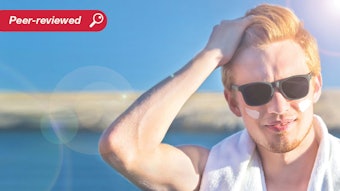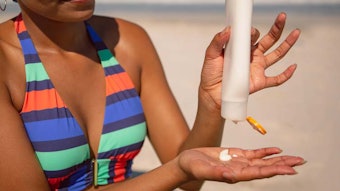
The U.S. sunscreen market is wrought with strife. To start, formulators were limited by the number of permitted sunscreen actives available, as well as their allowed combinations. The U.S. Food and Drug Adminstration (FDA) then changed the rules, requiring sunscreens to additionally provide broad spectrum protection; those sunscreen rules were changed again, just recently. Now, Hawaii and the Florida Keys have a stranglehold on organic UV filters.
While these moves were made in the interest of public and environmental safety, this got Cosmetics & Toiletries (C&T) to wondering: Why doesn’t the FDA simply permit Europe’s sunscreens? The answer isn’t simple. David Steinberg (DS) tried to explain it to us in the below podcast; following is an excerpt.
C&T: Why can't we get European sunscreens approved in the United States?
![DS: It goes back to the FDA’s monograph system, which was put into place to ensure that marketed drugs are safe and effective for consumers. [Recall that in the United States, sunscreens are regulated as drugs.] Science moves forward but there was no provision included in the monograph to allow for this; i.e., to approve or add new actives to the monograph system.](https://img.cosmeticsandtoiletries.com/files/base/allured/all/image/2019/03/gci.davidsteinberg200.png?auto=format%2Ccompress&fit=max&q=70&w=400) DS: It goes back to the FDA’s monograph system, which was put into place to ensure that marketed drugs are safe and effective for consumers. [Recall that in the United States, sunscreens are regulated as drugs.] Science moves forward but there was no provision included in the monograph to allow for this; i.e., to approve or add new actives to the monograph system.
DS: It goes back to the FDA’s monograph system, which was put into place to ensure that marketed drugs are safe and effective for consumers. [Recall that in the United States, sunscreens are regulated as drugs.] Science moves forward but there was no provision included in the monograph to allow for this; i.e., to approve or add new actives to the monograph system.When the system first was created, the powers-that-be proposed to reconvene every five years to look at new technologies but that’s never happened; and having to go through multiple layers of bureaucracy to get a decision certainly has not helped.
C&T: Is there any way to get new sunscreen actives onto the monograph?
DS: There is one way and that’s how avobenzone was added. One company realized it was a breakthrough technology and that it would require a new drug application (NDA). They applied and paid for the NDA but ended up selling off their sunscreen business before the NDA was approved. They became a pure pharmaceutical company and, as such, ended up marketing the product to dermatologists. It was only sold in drugstores under the counter, and it became the best-selling sunscreen on the U.S. market.
In the meantime, industry and the Cosmetic, Toiletry and Fragrance Association (CTFA; now the Personal Care Products Council) rallied the FDA to add avobenzone to the sunscreen monograph, which it didn’t; so a major sunscreen manufacturer began the NDA process again for its own avobenzone. They spent the money and the NDA was approved but the company didn’t understand the rules.
When a drug is approved in the United States, [the NDA covers] both the drug and the formula. So if you want to change the formula, that requires an amended NDA (ANDA), which is not as expensive as an NDA but still a lot of money. The company had developed different lines of the formulation but were called out by the FDA for changing the formula and it would have cost them a fortunate to continue marketing the new formulas.
The company finally got advice that you could switch avobenzone from an ANDA status to a monograph status if you file certain information with the FDA and it’s an almost automatic procedure; except when you do this, you lose your monopoly because anyone can then manufacture it. That’s how it was added to the monograph.
The way to go about [adding new sunscreens to the existing monograph] is to follow the avobenzone pathway. Go to a sunscreen producer, say you will foot the bill to get the NDA approved. Give them, e.g., a three-year monopoly; then after three years, file to switch it to monograph status.











